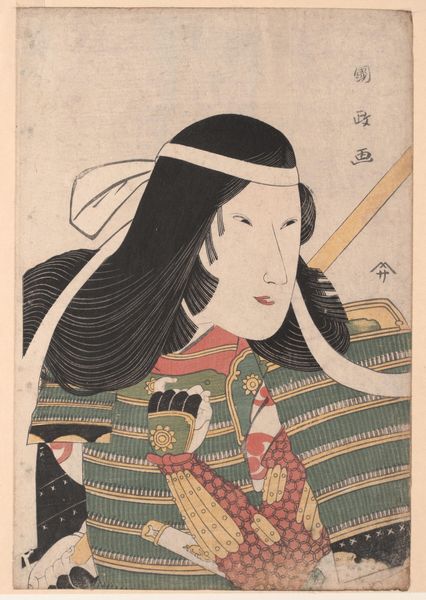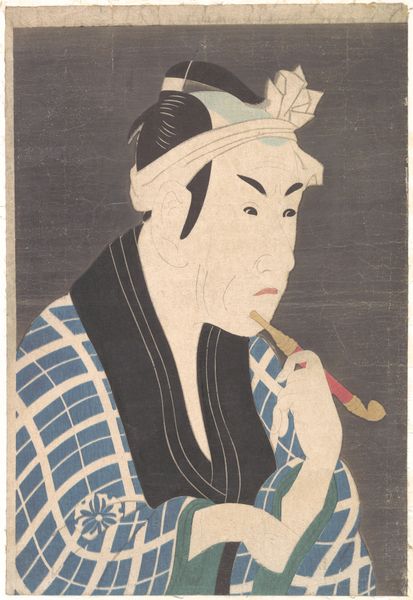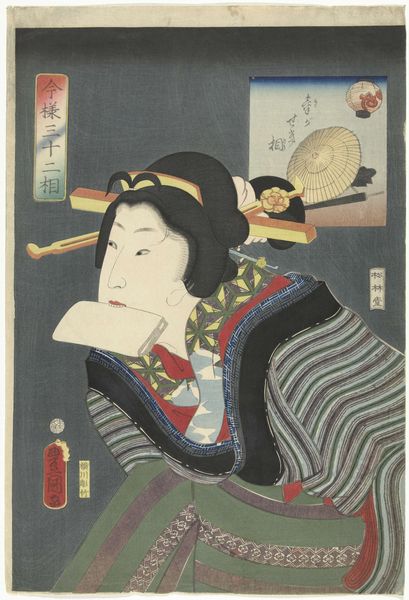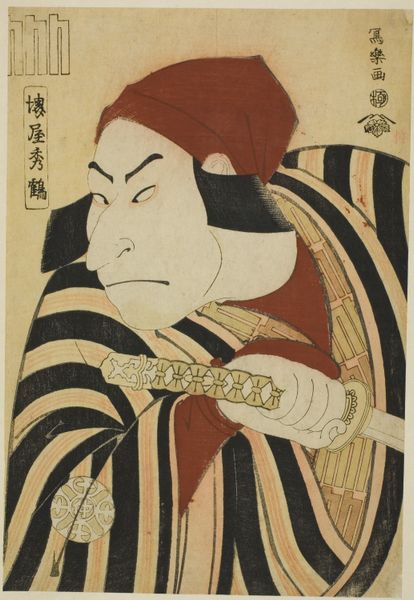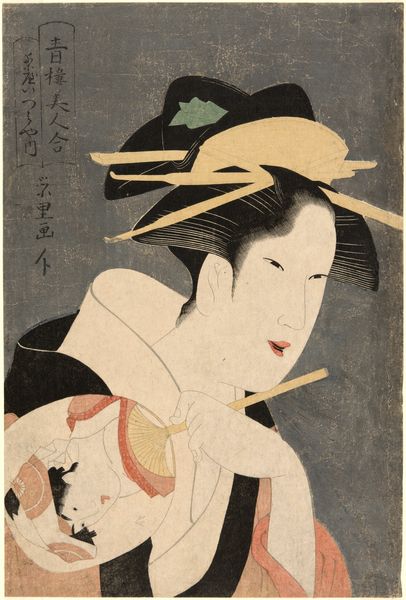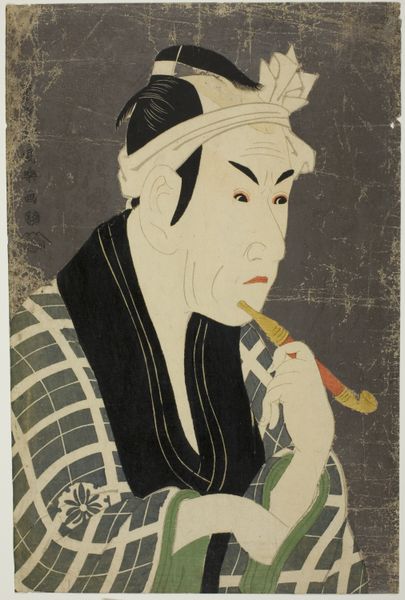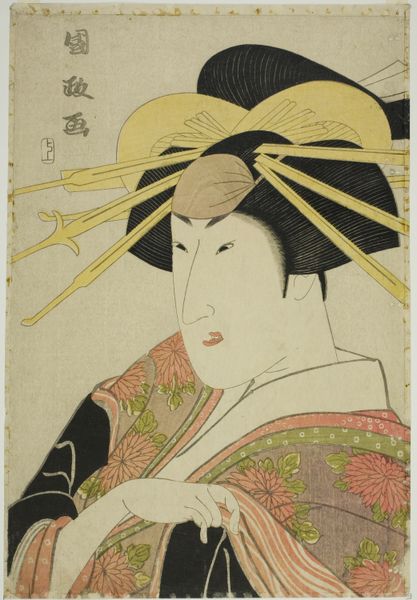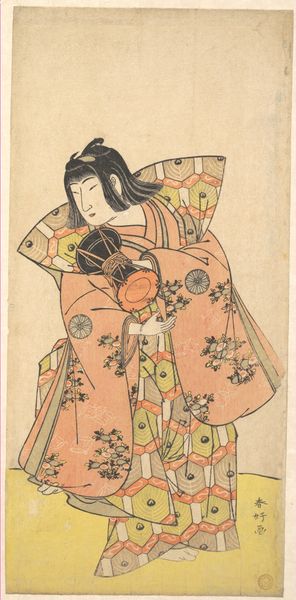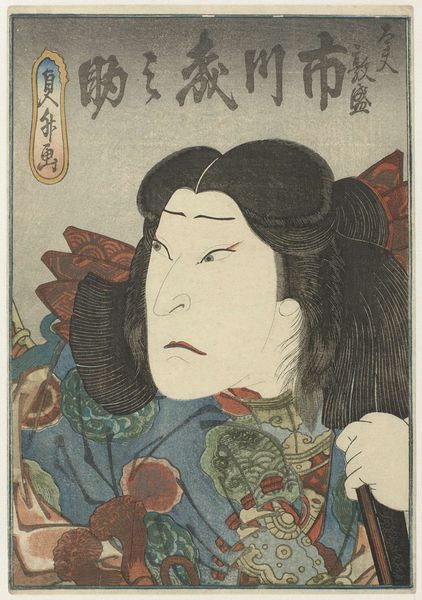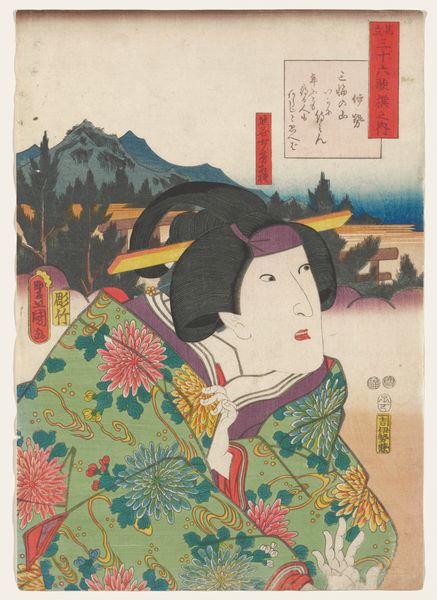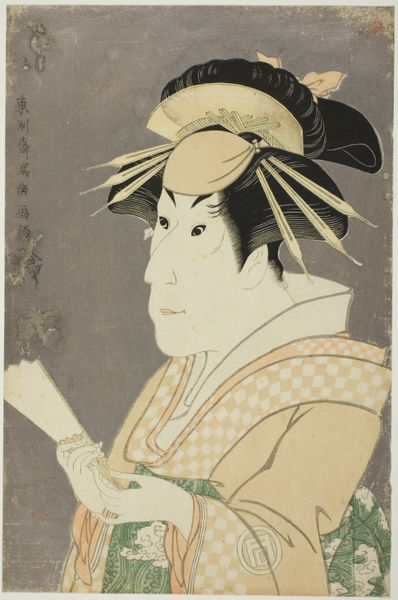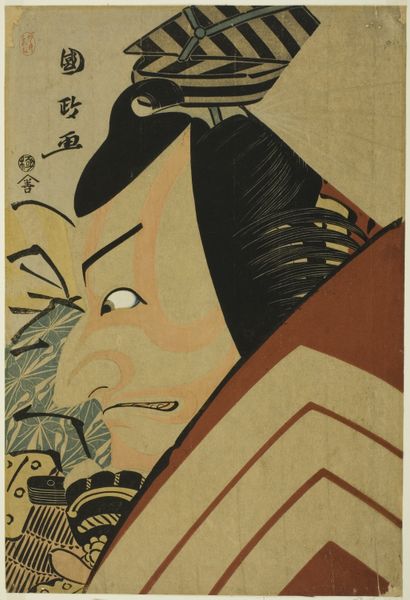
print, woodblock-print
#
portrait
# print
#
asian-art
#
ukiyo-e
#
figuration
#
woodblock-print
Dimensions: 39.2 × 26.5 cm
Copyright: Public Domain
Curator: This woodblock print, currently held at the Art Institute of Chicago, is Utagawa Kunimasa's "Iwai Kumesaburo in the Role of Lady Tomoe," dating from 1797. Editor: The pale, mask-like face set against the dark hair and faded blue background…there's an incredible sense of theatrical artifice here, wouldn't you agree? It’s both captivating and slightly unsettling. Curator: Absolutely. The figure depicted is a male actor portraying Lady Tomoe, a famous female warrior. The ‘onna-gata,’ or male actor playing female roles, carries significant cultural weight, echoing traditions in theater like Kabuki. We can think of the symbolic gesture as a cultural link between representation, identity, and performance. Editor: Yes, and understanding Kabuki tradition here, with its codification of gender roles and fluidity, challenges our assumptions. Lady Tomoe was a real figure but idealized. This is performance layered upon performance! How much of the 'real' Lady Tomoe do we even see here, versus constructed ideals? Curator: Precisely! Kunimasa’s rendering uses defined lines and patterns in the armor to visually communicate social standing, strength, and established ideals of femininity. Even the pristine headband speaks of nobility and elevated status. Editor: Thinking about audiences, too…What did it mean for 18th-century Japanese audiences to see this male figure embodying female heroism and power on stage and in print? How were notions of womanhood being reinforced or subverted by this representation? There’s something subversive about the spectacle itself! Curator: I find it all the more interesting that woodblock prints allowed the performance to be taken outside the theater space and into the home as a symbol for self-fashioning through this roleplay, but also preserving an emotional history. Editor: A visual reminder and re-enactment. The beauty in this print resides in this complex interplay of gender, power, and the symbols through which both were publicly understood, discussed, and reshaped in Edo society. Curator: Definitely. This print invites viewers to look beyond the surface, consider shifting definitions, and appreciate how the images embed cultural values over time.
Comments
No comments
Be the first to comment and join the conversation on the ultimate creative platform.
